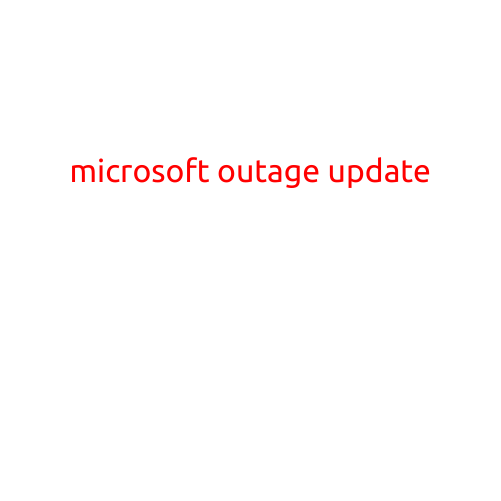
Microsoft Outage Update: Causes and Solutions
Microsoft experienced a widespread outage on [Date] that left millions of users around the world unable to access their Microsoft accounts and services. The outage, which began at around [Time], affected many popular Microsoft services, including Outlook, Hotmail, and Office 365.
What Happened?
The outage was caused by a technical issue that affected Microsoft’s cloud-based infrastructure, specifically its Azure Active Directory (AAD) authentication system. This system is responsible for verifying the identities of users and granting access to Microsoft services. For unknown reasons, the AAD system experienced a failure, leading to a cascade of errors and downtime across multiple Microsoft services.
Affected Services
The outage affected the following Microsoft services:
- Outlook.com
- Hotmail.com
- Office 365
- Microsoft Teams
- Microsoft OneDrive
Impact
The outage had a significant impact on users, who were unable to access their email, calendars, and other important Microsoft services. Many users reported issues with sending and receiving emails, while others experienced difficulties logging in to their accounts. The outage also affected businesses and organizations that rely on Microsoft services for their daily operations, causing disruption and inconvenience.
Microsoft’s Response
Microsoft acknowledged the outage and apologized for the inconvenience it caused. In a statement, the company said: “We’ve identified the cause of the issue and are working to resolve it as quickly as possible. We appreciate your patience and understanding.”
Microsoft took the following steps to address the outage:
- Identified the root cause of the issue and implemented a fix
- Rolled back any changes made to the AAD system that may have contributed to the outage
- Activated emergency backup systems to keep services available
- Provided regular updates on the status of the outage
Solutions
Microsoft has worked to address the underlying causes of the outage and has implemented measures to prevent similar issues in the future. Some of the solutions include:
- Upgrading the AAD system to improve its reliability and resilience
- Implementing additional backup systems to ensure continuity of services
- Conducting thorough testing of the AAD system to identify and fix potential issues
- Providing regular security updates and maintenance to prevent future outages
Conclusion
The Microsoft outage highlights the importance of having a robust and reliable IT infrastructure. While outages can and do happen, it’s essential for service providers to have contingency plans in place to minimize the impact on users. Microsoft has taken steps to address the outage and prevent similar issues in the future, and we appreciate the company’s transparency and responsiveness in communicating with users and customers.
Return to Normal Operations
Microsoft has confirmed that all affected services have been restored and are now functioning as normal. The company will continue to monitor the situation and make any necessary adjustments to ensure the stability and availability of its services.
Takeaway
The Microsoft outage serves as a reminder of the importance of having a reliable IT infrastructure and a contingency plan in place. It also highlights the importance of transparency and communication in managing IT outages.





